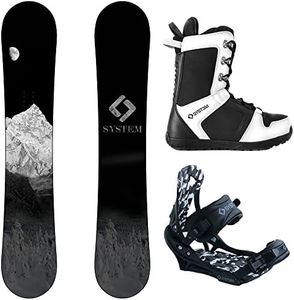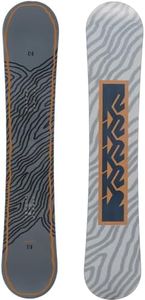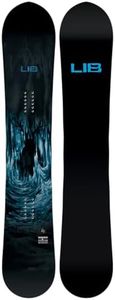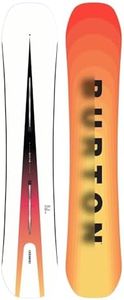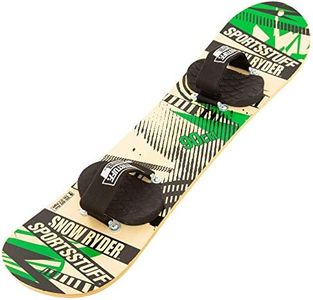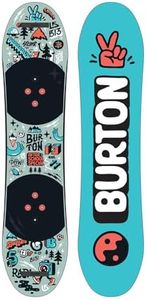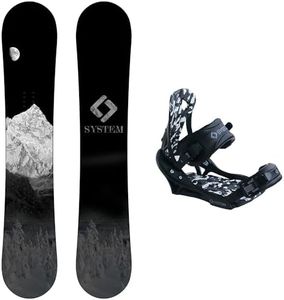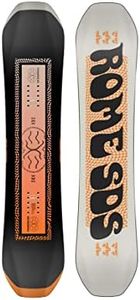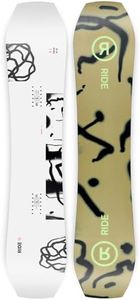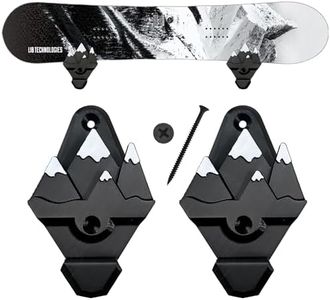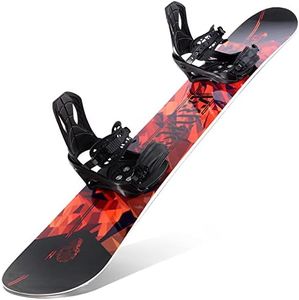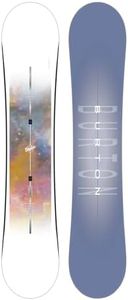We Use CookiesWe use cookies to enhance the security, performance,
functionality and for analytical and promotional activities. By continuing to browse this site you
are agreeing to our privacy policy
10 Best Twin Snowboard 2025 in the United States
How do we rank products for you?
Our technology thoroughly searches through the online shopping world, reviewing hundreds of sites. We then process and analyze this information, updating in real-time to bring you the latest top-rated products. This way, you always get the best and most current options available.

Buying Guide for the Best Twin Snowboard
Choosing the right twin snowboard can significantly enhance your snowboarding experience. A twin snowboard is designed to be symmetrical, meaning the nose and tail are identical in shape and flex, making it ideal for freestyle riding and tricks. When selecting a twin snowboard, it's important to consider several key specifications to ensure it matches your riding style, skill level, and the type of terrain you plan to ride on. Understanding these specs will help you make an informed decision and find the best fit for you.LengthThe length of a snowboard is measured from tip to tail and is crucial for stability and control. Generally, shorter boards are easier to maneuver and are better for tricks and park riding, while longer boards provide more stability at high speeds and are better for powder and all-mountain riding. To choose the right length, consider your height, weight, and riding style. A good rule of thumb is that the board should reach somewhere between your chin and nose when stood on end.
WidthThe width of a snowboard is measured at its narrowest point, usually the waist. It's important because it affects how well your boots fit on the board and how the board handles. If the board is too narrow, your boots may hang over the edges, causing drag and reducing control. If it's too wide, it can be harder to turn. To find the right width, ensure that your boots fit comfortably on the board without excessive overhang. Riders with larger feet (size 11 and up) should consider wide models.
FlexFlex refers to how much a snowboard bends under pressure. It can range from soft to stiff. Soft flex boards are more forgiving and easier to maneuver, making them ideal for beginners and park riders who need flexibility for tricks. Stiff flex boards offer more stability and edge control, which is beneficial for high-speed carving and riding in challenging conditions. Your choice should depend on your skill level and preferred riding style. Beginners and freestyle riders typically prefer softer flex, while advanced riders and those who enjoy carving may opt for stiffer boards.
Camber ProfileThe camber profile describes the shape of the snowboard when viewed from the side. Common profiles include traditional camber, rocker, flat, and hybrid. Traditional camber boards have a slight upward curve in the middle, providing good edge hold and pop. Rocker boards have a reverse camber, making them more playful and easier to turn. Flat boards offer a balance between stability and flexibility. Hybrid profiles combine elements of camber and rocker for versatility. Choose a profile based on your riding style: camber for precision and control, rocker for playfulness and ease, flat for versatility, and hybrid for a mix of characteristics.
Sidecut RadiusThe sidecut radius is the measure of the curve along the edges of the snowboard. It affects how the board turns. A smaller sidecut radius means a tighter turn radius, which is great for quick, sharp turns and freestyle riding. A larger sidecut radius provides longer, more stable turns, which is better for high-speed carving and all-mountain riding. Consider your riding style when choosing the sidecut radius: if you enjoy quick, agile movements, go for a smaller radius; if you prefer long, sweeping turns, opt for a larger radius.
Base MaterialThe base material of a snowboard affects its speed and durability. There are two main types: extruded and sintered. Extruded bases are easier to repair and maintain, making them a good choice for beginners and park riders. Sintered bases are faster and more durable but require more maintenance, making them suitable for advanced riders who prioritize speed and performance. Choose a base material based on your skill level and how much maintenance you're willing to perform.
Most Popular Categories Right Now
